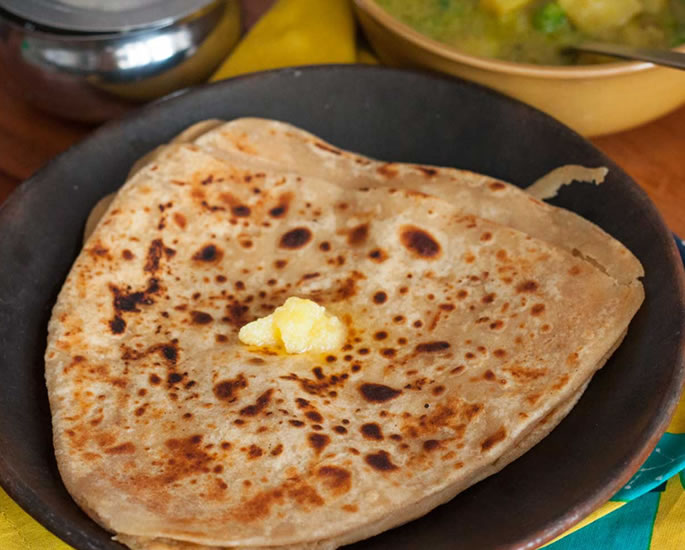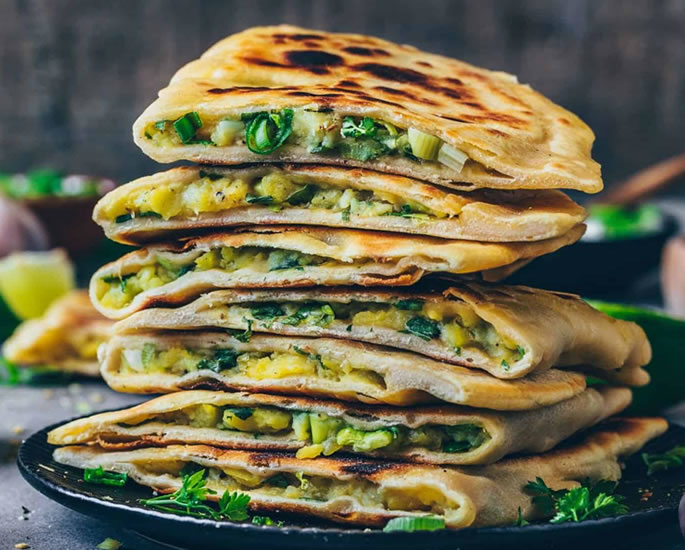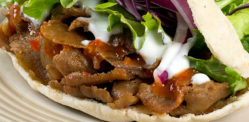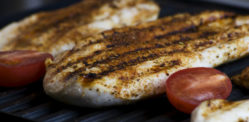In the rich tapestry of Indian cuisine, parathas have earned a cherished place as a beloved comfort food.
These delightful flatbreads, traditionally enriched with ghee and often brimming with delectable fillings, are an embodiment of taste and tradition.
While parathas have been celebrated for their scrumptiousness, they are associated with unhealthiness due to a number of reasons.
This spans from cooking methods to filling.
Fortunately, there are ways to make healthy parathas.
By ingeniously infusing these beloved staples with wholesome ingredients and mindful cooking techniques, we can embark on a journey to create parathas that not only tantalise the tastebuds but also nourish the body.
We delve into five ways to make healthy parathas, celebrating the marriage of flavours, nutrition and well-being.
A Plain Paratha Recipe
While there are many versions of paratha that can be made, here is a recipe for a traditional plain one without any filling.
It is made with just five ingredients and does not take long at all to make.
Ingredients
- 3 cups all-purpose flour
- 1¾ tsp salt
- 1 tbsp neutral oil
- 1 cup warm water
- ¾ cup ghee
Method
- Place the flour and salt into a large bowl and whisk.
- Drizzle with oil and use your hands to rub the oil into the flour until only tiny lumps remain.
- Make a well in the centre and pour in a cup of warm water. Mix with your hands until it begins to form a dough.
- Knead until the flour is incorporated.
- Leave the dough in the bowl and rub a light coating of oil over the dough’s surface.
- Press some cling film directly onto the dough’s surface and leave it to rest for about 30 minutes.
- To assemble the paratha, place the dough onto a work surface and divide into eight portions. Dust a work surface and rolling pin with flour.
- Roll each dough ball into a thin circle measuring approximately 14 inches in diameter.
- Use your fingers to evenly spread one tablespoon of ghee over the dough. Sprinkle a pinch of flour to help provide definition between the layers.
- Starting at the bottom, tightly roll the dough into a log. Starting at one end, coil the log up into a round to resemble a cinnamon roll.
- Cover with cling film and repeat with the remaining portions. Allow to rest for 15 minutes.
- Roll the paratha into a circle that is 1/8-inch thick and around six inches in diameter. Transfer to a plate and repeat the process.
- Heat a non-stick frying pan over medium heat then add one paratha. Cook until the surface is beginning to turn opaque.
- Flip and cook until the second side’s surface is completely opaque.
- Flip again and cook for a minute.
- Add half a tablespoon of ghee to the pan. Move the paratha around, flipping as needed until coated.
- Cook until golden brown, which is approximately a further two minutes per side.
- Transfer to a plate and repeat the cooking process.
This recipe was inspired by The Kitchn.
While this is a step-a-step guide on how to make parathas, there are a number of ways to make them healthier.
Flour Matters
The flour used to make parathas makes a big difference in determining its health value.
Using whole wheat or multigrain flour instead of all-purpose flour is a healthier option.
One reason is that whole wheat flour contains the bran, germ, and endosperm of the wheat kernel, whereas refined flours are stripped of the bran and germ, leaving only the starchy endosperm.
The bran and germ are rich in dietary fibre, which is essential for digestion, gut health, and maintaining stable blood sugar levels.
It contains phytochemicals, such as lignans and phenolic acids, which have antioxidant and anti-inflammatory properties.
These compounds contribute to the potential health benefits of whole grains.
If you prefer khasta paratha, add semolina or sooji to the dough.
Knead the paratha dough with curd or whey water to amp up the degree of probiotics, protein and other nutrients.
You can also add some milk to your paratha dough to increase the calcium content. This will ensure your parathas come out soft.
Choose the Right Filling
The filling plays a central role in deciding how healthy the paratha will be.
Potatoes and paneer are common fillings but they can be high in calories.
So instead, choose healthier fillings such as spinach, grated carrots, tofu or daal.
By doing this, not only will you have healthy parathas but you will also have a variety of fillings to choose from.
While using vegetable fillings, make sure that the ratio of vegetables is more than the dough.
For added flavour and nutrients, feel free to add spices and herbs. Turmeric, cumin, coriander and fenugreek are not only flavourful but also have potential health benefits.
Healthy Fats
Parathas tend to be labelled unhealthy because many people love to cook them in lots of butter or ghee and serve them with oily pickles.
For healthy parathas, ensure you choose a healthy fat to fry them with, such as olive oil or avocado oil.
And instead of shallow frying parathas, which can add calories, brush a thin layer of oil on them.
Cook them on both sides until brown dots appear then apply small amount of your chosen fat on both sides.
Cook until golden brown.
The parathas will remain crisp and have a delicious flavour but will be far lower in calories.
Add Healthy Seeds
Add some crunch to your parathas by incorporating a handful of healthy seeds to them.
For example, you can add pumpkin seeds, chia seeds, sunflower seeds or even a mixture of them all to your paratha dough.
Alternatively, you can enrich your stuffing with the seeds of your choice.
Not only do they add more texture but they are incredibly nutritious.
Seeds are often packed with essential nutrients such as vitamins (like vitamin E and some B vitamins), minerals (such as magnesium, zinc, and iron), and antioxidants that support overall health and well-being.
Seeds are also an excellent source of dietary fibre, which aids in digestion, helps maintain healthy cholesterol levels, and promotes a feeling of fullness, potentially aiding in weight management.
Grilling or Baking
The way parathas are cooked can have an effect on how healthy they are.
Parathas are typically fried which adds extra calories from the oil that is absorbed. A healthier alternative is to grill or bake them.
The most obvious reason is that these methods require much less oil or sometimes no oil at all. This significantly reduces the calorie and fat content of the final dish.
By minimising unhealthy fats, grilling or baking can contribute to better heart health by reducing the consumption of saturated and trans fats.
Frying at high temperatures for extended periods can lead to nutrient loss in foods. Grilling or baking uses gentler heat, helping to retain more of the nutrients present in the ingredients.
While grilling or baking may not produce the exact same texture as frying, it can still provide a satisfying crispness without the need for excess oil.
While these tips sound simple, they make a huge impact on the healthiness of parathas.
Changing the fillings or cooking methods provides a number of health benefits and makes parathas more nutritious.
So, try these changes and see the difference!



































































